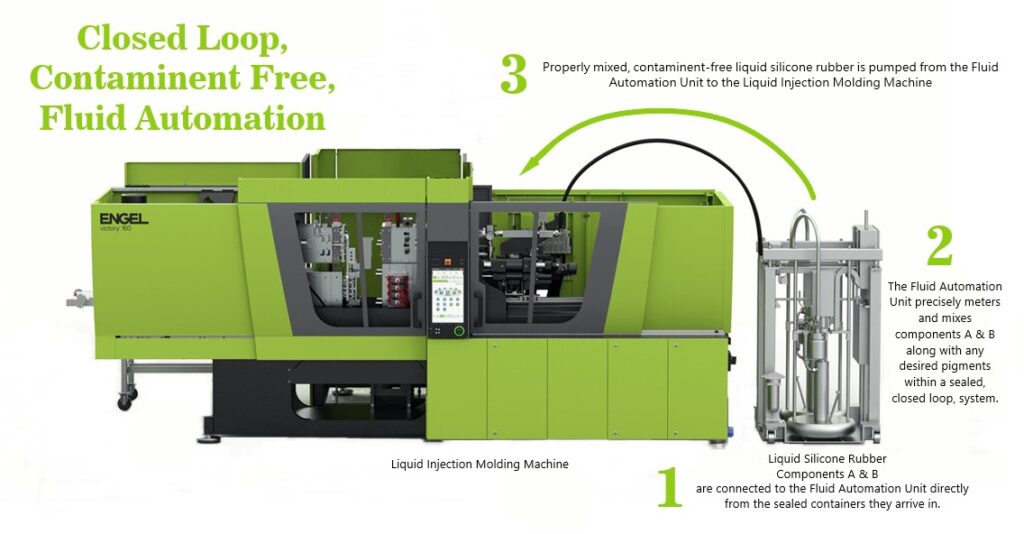Liquid silicone molding or LSR for short varies greatly from standard plastic injection molding. From the process as a whole, to the properties of the two materials, there really is no comparison that can be made. Often times we receive requests for quote where a silicone rubber keypad or component is being treated as if it were plastic. Below we will go through some of the key characteristics of silicone molding and why it differs from plastics.

For starters, at Si-Tech we utilize liquid silicone injection molding (LIM), which is a method of custom molding high viscosity, 2-part liquid silicone rubber (LSR). Sealed raw material, once connected to the machine, is automatically metered at a 1 to 1 ratio, along with pigment of choice, and injected into a water-cooled barrel that mixes the material and keeps it from catalyzing. Material is then injected into a hot mold cavity where it cures within a matter of seconds. The mold opens, the part is removed, and the process repeats.
Next, we have to take into account the material properties of silicone rubber. Silicone keypads & components shrink after the demolding process. The silicone material we use at Si-Tech typically shrink 2-3% after the demolding process. If a post-curing process is required for the part, an additional 0.5-1% shrink will occur. This in addition to the fact that silicone rubber is elastic and can stretch, makes it extremely difficult to hold tight tolerances on silicone rubber. Here at Si-Tech we have determined the tightest tolerances we are capable of. Our tolerances vary from your standard Class M2 and are more closely represented by the Class M1 tolerances in ISO 3302.
Si-Tech specializes in liquid injection molding silicone rubber keypads & components. For more information call us at 757-887-8488 or use our contact form to request a quote today.








